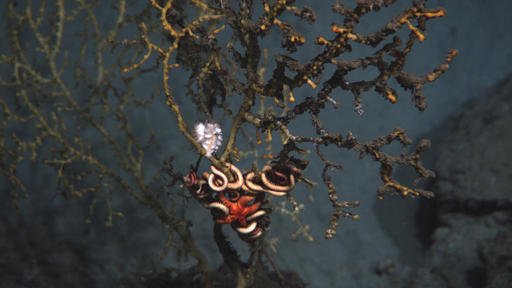
"We are trying to behave that we have never done before," stated Erik Cordes, a Temple College barrier expert that has studied the corals broken through the spill and labored around the government’s restoration plans. "We’re in uncharted waters here."
The continental shelf drops dramatically, about 25 miles from the Louisiana coast. Miles below, there’s an enormous amount of inky cold blackness. Although obscure, this deep sea world is really a first step toward the existence and food webs from the gulf. Scientists say you need to try restoring it.
In April, a federal judge approved BP’s $20 billion settlement to pay for the spill’s ecological and economic damage. However a relatively small part of that — about $273 million — continues to be earmarked for restoring the deep sea within the next fifteen years.
It is from obvious if much can be achieved because deep-ocean restoration has not been attempted, scientists stated.
There will not be nurseries for deep-ocean starfish, lobsters and shrimp. Pricier corals to become hatched in laboratories and transported miles lower towards the Gulf floor. Oil included the sediment will not be selected up by submarines or subsea robots.
"Obtaining (oil-contaminated) sediment over countless miles is simply not practicable," stated Paul Montagna, a marine biologist using the Harte Research Institute at Texas A&M College-Corpus Christi.
Ocean cucumbers, worms, and crustaceans are the only life based in the vast stretches of muddy and sandy bottoms. They feast upon detritus floating lower. This sameness is damaged in places by colonies of spindly colorful ancient corals. Here, crabs, eels, fish and shrimp congregate.
"These deep ocean critters grow so gradually … all are going to is wait and hope they recover fully," stated Samantha Joye, a marine biologist in the College of Georgia, within an email. "This really is something our grandkids might easily be studying 4 decades from now!"
BP’s out-of-control deep well spat oil for 87 days in to the Gulf this year. A lot of it never arrived at the top, stored within the depths both by chemical dispersants sprayed to help keep the oil from reaching shores by natural forces.
Studies believed as much as about 30 % from the greater than 172 million gallons of oil released in the well continued to be within the Gulf and as much as about 3,250 square miles from the seafloor was affected — a place nearly how big Yellowstone.
Scientists have found extensive damage, lower deep.
The worst was near BP’s blown-out well, 45 miles from the Louisiana coast. However a much bigger area was struck by underwater oil plumes and covered in contaminated marine snow, stringy brown, made of woll-like clumps of particles that drifted lower in the surface slicks. Near to the well, scientists say oil coated creatures and barrier, killing them. Farther away, oil contamination has stunted animals’ growth, left corals with damaged branches and fouled the meals web.
This injuries towards the deep-ocean shouldn’t be overlooked, scientists stated.
"The greater we find out about the deep-ocean, the greater we find out about the connections between shallow waters and also the deep water. Alterations in the deep-ocean have repercussions for that wider Gulf," Cordes stated. "However the frightening part is the fact that we do not understand what the repercussions might be.Inch
Fish of all types get nourishment lower within the deep. Essential nutrients originate there. The deep-ocean also absorbs a lot of the planet’s heat and co2.
Regardless of the difficulty, you will find suggestions for repairing the deep Gulf.
A government restoration plan suggests dumping oyster covering, limestone and manufactured "reef balls" in to the sea with the hope that barrier and fish colonize them.
The program also views transplanting healthy barrier to reefs hit through the oil. The program notes this has not been completed in deep waters before, just like growing deep-ocean barrier in laboratories is not attempted.
Baruch Rinkevich, a barrier restoration expert in the National Institute of Oceanography in Israel, stated within an email that deep-water barrier restoration is stymied by too little understanding of the biology. Approaches for restoring shallow-water corals haven’t been attempted within the deep, he added.
Scientists also aspire to prevent further injuries.
Some areas might be designated as protected reserves: no-go zones for fishing and gas and oil drilling, places where vessels could be prohibited from dumping waste and debris and from anchoring.
Researchers are searching at protecting a lengthy deep-ocean high cliff from the Louisiana coast, near the spill-broken sites. Cordes stated that may help barrier larvae across the high cliff migrate and populate sick and dying reefs nearer to the spill zone.
Other ideas include fixing leaky gas and oil pipelines and wells which may be hurting deep-water existence.
Brittany Croll, an ecological researcher using the National Oceanic and Atmospheric Administration who’s labored around the restoration plans, is hopeful because researchers can draw understanding from barrier restoration which has been completed in shallower waters.
She also stated habitat restoration in shallower waters and along shores will not directly assist the offshore since several species migrate from both places.
Regardless, recovery is going to be slow. Existence forms within the deep grow very gradually — about 10 occasions slower one half mile underneath the sea.
Cordes is disappointed deep Gulf restoration has not already commenced.
"From sight, from mind, regrettably," Cordes stated. "People still don’t understand there are massive barrier reefs in their backyard within the Gulf.Inch
Resourse: http://tampabay.com/news/atmosphere/water/uncharted-waters-restoring-the-deep-gulf-of-mexico-fouled-by-bps-deepwater/